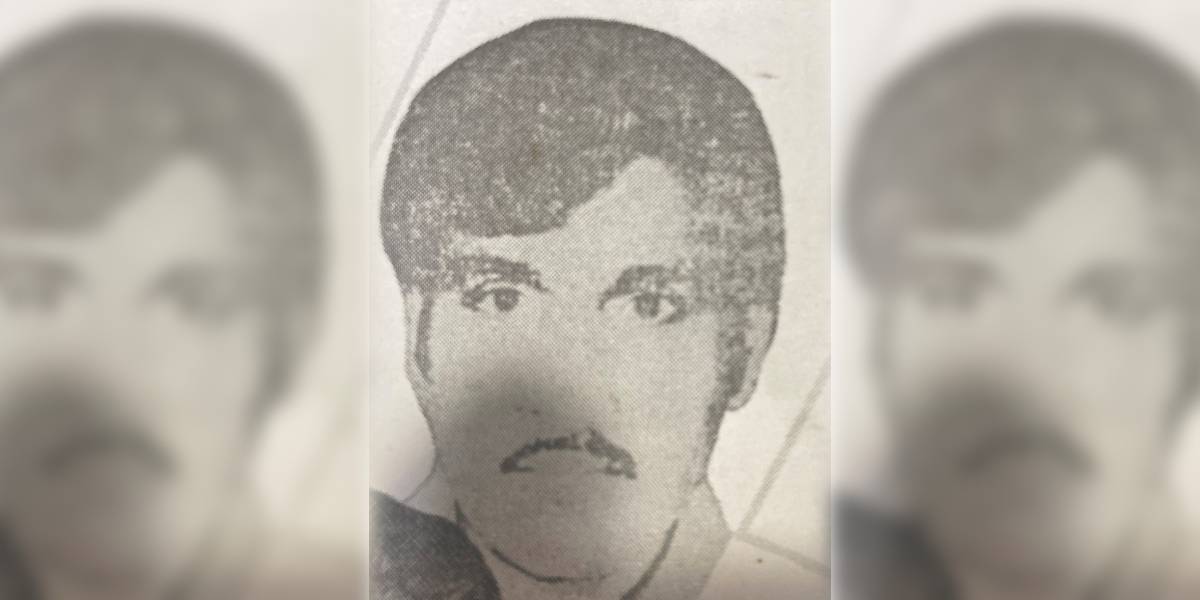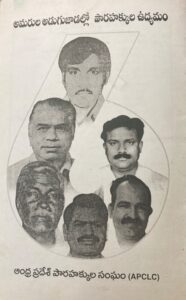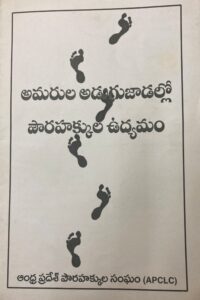The killers were waiting on the night of 12 January 1985, just like in the famous Gauri Lankesh murder more than 30 years later, and fired at the advocate who used to defend poor peasants in court.

Gopi Rajanna, an advocate by profession and an activist of the APCLC (Supplied)
In the atmosphere of increasing intolerance and attacks against people with different opinions in general and the widespread protests against Sangh Parivar’s assault on a school teacher for explaining rationalism in Kotagiri, Nizamabad, it is worth remembering a similar scenario that led to the death of an advocate some 38 years ago in Jagtial, not very far from the current tense scene.
Gopi Rajanna, an advocate by profession and an activist of the Andhra Pradesh Civil Liberties Committee (APCLC) by choice, was killed on 12 January 1985 at 9.30 pm in front of his house, just as he and his wife were returning from a film.
The killers were waiting there, just like in the famous Gauri Lankesh’s case 32 years later, and fired at him, beat up his wife with rifle butts, and escaped. The assassins remained “unidentified” in police records, but popular belief attributes the assassination to specific ideological and political opponents.
In a statement two weeks after the ghastly incident, Gobinda Mukhoty, Supreme Court advocate and the then president of People’s Union for Democratic Rights (PUDR), said, “…an APCLC lawyer, Mr Gopi Rajanna (vice-president, Jagtial taluk unit)…was shot dead outside his house on Jan 12 by armed goons. His wife was also seriously injured. No arrests have been made to date.”
Not only two weeks later, but even after two decades too, the killers have neither been identified nor proceeded against.
Speaking to Tehelka in March 2006 on the killings of APCLC activists, after a spate of killings by state-sponsored vigilante groups, human rights activist and lawyer K Balagopal said, “Barring Gopi Rajanna, who was shot dead by RSS members, the other three were shot dead by policemen. No arrest was made in any of the cases, and the cases have now been closed as undetected.”
While these two human rights activists termed the assassins “armed goons” and “RSS members”, Human Rights Watch in its September 1992 report ‘Police Killings and Rural Violence in Andhra Pradesh’ called them “thugs reportedly hired by local landlords” and added, “The police failed to follow up leads linking the killing to local land owners, some of whom had close links to political leaders and the police. No one was prosecuted for the murder.”

An APCLC booklet titled ‘Amarula Adugujaadallo Pourahakkula Udyamam’ with photos of the civil liberties activists who were murdered. (Anticlockwise) Gopi Rajanna, Dr A Ramanadham (both killed in 85), J Lakshma Reddy (87), N Prabhakar Reddy (91), T Purushottam (99), and Md Azam Ali (2000) (Supplied)
And why was he targeted by whomever, be it political leaders or landlords or police?
According to the booklet ‘Amarula Adugujaadallo Pourahakkula Udyamam’ (‘Civil Liberties Movement in the Footprints of Martyrs’) published by APCLC in 2000, Gopi Rajanna was born in a landless agricultural labour family in Kolvai village in Jagtial taluk.
His family was so poor that he could not afford an education. He paid for his education by giving tuitions from a very young age. Ironically, he used to make use of Saraswati Shishu Mandir premises to teach children at that time.
However, he could not digest the high-handedness and the ideology of RSS that runs Shishu Mandir and left using the premises. Facing several hardships, he studied law and began his practice in Jagtial court in 1981.
The Jagtial area was a veritable cauldron of ideas and practice at that time with raging peasant struggles against feudal land relations and oppression. With the post-Emergency upsurge of people’s movements, Jagtial and Sircilla taluks witnessed massive mobilisation and hundreds of villages joining the movement led by Marxist Leninist parties.
In Jagtial area, the Radical Students Union, Radical Youth League, and Raithu Cooli Sangham were very active in confiscating excess lands above the Land Ceiling Act prescription from landlords and distributing them to people. They also launched a number of struggles to increase wages, to do away with unpaid labour and services, and against sexual exploitation by landlords.

The APCLC booklet ‘Amarula Adugujaadallo Pourahakkula Udyamam’ (‘Civil Liberties Movement in the Footprints of Martyrs’) (Supplied)
The landlords in turn presented it as a law-and-order issue. The government readily accepted their viewpoint and declared Jagtial and Sircilla taluks as Disturbed Areas in October 1978 under the Suppression of Disturbances Act 1948.
The notification granted unlimited powers to police to arrest and open fire. With such unaccounted power in their hands, police swooped down on villages and beat people indiscriminately. They used to demolish houses, destroy their crops and utensils, add kerosene in foodgrains, and steal whatever little valuables were with the poor people.
They used to take away youngsters and subjected them to inhuman torture for days together in illegal custody. Finally, some of them would be shown as accused in fabricated cases.
Thus every day, Jagtial court was receiving dozens, if not hundreds, of poor peasants implicated in criminal cases for their alleged links with Naxalites and Rajanna remained one of the sources of relief for those hapless accused.
One cannot separate when he became a poor people’s lawyer and when he joined APCLC, but ever since he began his practice in courts of law, he became an activist and soon he became vice president of Jagtial taluk unit of the organisation. He would defend the innocent villagers in court and file complaints against police for wrongful confinement.
These activities of Rajanna naturally earned him the wrath of the landlords and police. Children of the landlords, who were students in Jagtial, were also members of the ABVP and RSS and they developed a grouse against this budding advocate.
Some lawyers, who were supporters of the RSS and BJP in Jagtial court, admonished Rajanna and advised him not to take up the cases of villagers and resign from the APCLC. He would not take heed.
In 1983, there was a change of government. NT Rama Rao, as the new chief minister continued the repressive policies, even though before elections, he invited Naxalites to join hands with him.
The new government initiated a policy of supplying firearms to the landlords for their “self-defence”. The Disturbed Area promulgation prohibited keeping any arm, including the sickle, axe, and crowbar and hundreds of villagers were charged and sent to jail for that crime, but landlords were allowed to acquire legal weapons.
The same “self-defence” arms were used in killing Gopi Rajanna.
Though there has been no official identification of the killers and criminal proceedings against them, the literature of the civil liberties and the revolutionary movements continue to blame it on ABVP-RSS at the behest of landlords and hand in glove with police.
Surprisingly, there has not been a single denial from the accused in the last almost four decades. This reminds one of the case of the slain Osmania University student leader George Reddy.
While George Reddy was killed in 1972 and police proceeded against a few ABVP leaders and hired gangsters, the court declared that the prosecution failed to prove them guilty. Despite the verdict, people still believe that it was the handiwork of Hindutva forces, though the nomenclature was not in vogue at that time.
Similarly, Gopi Rajanna also continues to remain in public memory as one who fell to the bullets of Hindutva forces.
(N Venugopal is the Editor of Veekshanam, Telugu monthly journal of political economy and society. These are the personal views of the author)

Apr 26, 2024

Apr 26, 2024

Apr 25, 2024

Apr 25, 2024

Apr 25, 2024

Apr 25, 2024